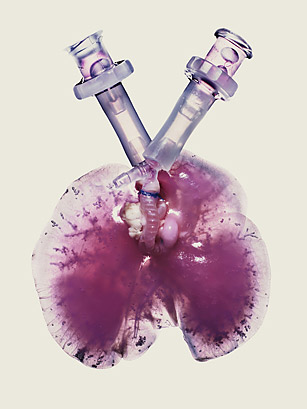
Growing new body parts has always been more science fiction than science reality, but that balance may quickly be shifting, at least in the lab. Relying on more sophisticated biosimulators that can better mimic body conditions, researchers have re-created the delicate architecture of a rat lung accurately enough for it to assume 95% of a normal lung's inhaling and exhaling functions. The key to their respiratory success was starting with a skeletal rat-lung template, including a matrix of blood vessels and collagen and other connective tissue, then seeding it with stem cells and nutrients to generate lifelike tissue that exchanged oxygen and carbon dioxide just like normal lung tissue. The ultimate goal is to replicate the feat on a larger scale: to replace enough human lung tissue to aid patients with emphysema or lung cancer.